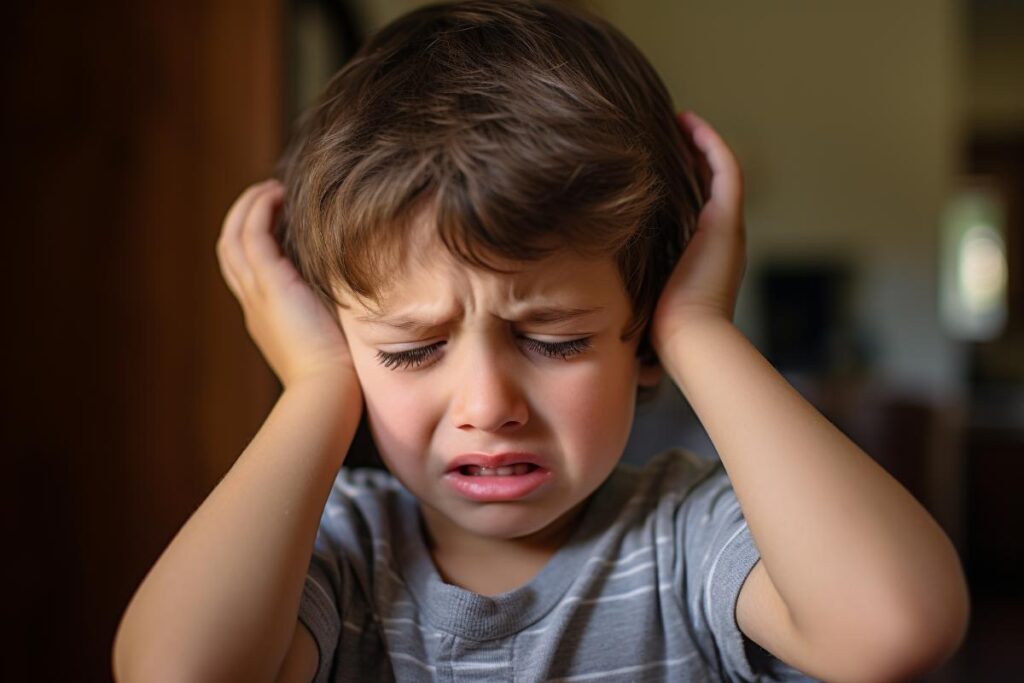When you think about chronic back pain relief, it's fascinating to contemplate how ancient civilizations approached this pervasive issue. Cultures like the Egyptians and Greeks didn't just treat pain; they intertwined it with emotional and spiritual beliefs, using herbal remedies and early physical therapies that laid the groundwork for today's practices. As you explore these historical insights, you'll uncover the remarkable evolution of treatments and perhaps find unexpected connections to modern methods that could influence your own understanding of pain management. What lessons from the past might still resonate today?
Ancient Perspectives on Pain
When you explore ancient perspectives on pain, you'll find that cultures throughout history have approached discomfort in fascinating ways. In many ancient societies, pain wasn't just a physical experience; it often held spiritual or mystical significance.
For example, the ancient Egyptians viewed pain as a message from the gods, prompting individuals to seek divine intervention or guidance. You might imagine a priest or healer interpreting these signals, helping the afflicted find relief through rituals and offerings.
In ancient Greece, philosophers like Hippocrates laid the groundwork for understanding pain through a more scientific lens. They believed that imbalances in bodily fluids, or humors, were responsible for various ailments, including chronic pain. You can see how this perspective influenced early medical practices, focusing on restoring balance rather than solely treating symptoms.
The ancient Chinese also had unique views on pain that still resonate today. They believed in the flow of Qi, or life energy, and saw pain as a blockage in this flow. You might picture a practitioner using acupuncture or other techniques to restore harmony within the body, emphasizing prevention and holistic care.
As you investigate these ancient insights, it's clear that pain was often seen as a complex interplay of physical, emotional, and spiritual factors. Understanding these perspectives can enrich your own approach to managing chronic back pain, reminding you that healing is a multifaceted journey that spans beyond just physical remedies.
Herbal Remedies Through the Ages
You might be surprised to learn that herbal remedies for back pain have roots in ancient practices.
Many cultures relied on natural ingredients to ease discomfort, and some of those remedies are still in use today.
Exploring these time-tested solutions can offer you new options for relief.
Ancient Herbal Practices
Throughout history, herbal remedies have played an essential role in alleviating chronic back pain. Ancient civilizations relied on nature's bounty to ease discomfort and promote healing.
You'd find yourself in a world where remedies were crafted from local plants, each with unique properties to address pain.
Consider these ancient herbal practices:
- Willow Bark: Known as nature's aspirin, it contains salicin, which helps reduce inflammation and pain.
- Turmeric: This golden spice boasts powerful anti-inflammatory properties, often used in pastes or teas to soothe aching backs.
- Devil's Claw: Traditionally used in African medicine, it's known for its ability to relieve pain and improve mobility.
- Ginger: A common ingredient in ancient concoctions, ginger helps increase blood flow and reduce muscle soreness.
These practices reflect a deep understanding of the healing power found in herbs.
While you mightn't rely solely on these ancient methods today, they laid the groundwork for modern herbalism.
Traditional Remedies Today
Building on the rich history of herbal remedies, traditional approaches to managing chronic back pain have evolved considerably over time.
Today, you can find a variety of herbal treatments that blend ancient wisdom with modern understanding. For example, turmeric, known for its anti-inflammatory properties, is often recommended to those suffering from chronic pain. You might also consider using ginger, which can help reduce muscle soreness and improve circulation.
Many people turn to topical applications like arnica gel, derived from the arnica plant, to soothe localized pain and bruising.
Additionally, you may find relief through herbal teas, such as chamomile or peppermint, which can relax your muscles and ease tension.
It's important to note that while these remedies can be quite effective, they're best used in conjunction with other treatments.
Always consult with a healthcare professional before starting any new regimen.
Early Physical Therapy Practices
Early physical therapy practices have paved the way for effective management of chronic back pain. These early methods focused on movement and exercise, recognizing the importance of physical activity in healing. You'd find practitioners using simple techniques that emphasized strengthening muscles and enhancing flexibility, laying the groundwork for what's understood today.
Consider some of the core elements of these practices:
- Manual Manipulation: Techniques such as massage and joint manipulation aimed to relieve pain and restore function.
- Therapeutic Exercises: Specific movements were prescribed to improve strength, balance, and coordination, making daily activities easier.
- Heat and Cold Applications: Early therapists often applied heat or cold to reduce inflammation and promote healing.
- Education and Self-Management: Patients were taught about their conditions and encouraged to take an active role in their recovery.
These foundational practices not only provided immediate relief but also empowered you to become an active participant in your rehabilitation journey.
They highlighted the body's ability to heal through movement, a principle that resonates strongly even in modern physical therapy. As you explore these early methods, you can appreciate how they influenced contemporary approaches to treating chronic back pain.
The Role of Acupuncture
Acupuncture has roots that stretch back thousands of years, offering unique insights into pain management.
In recent years, modern science has started to explore how these ancient practices can provide relief for chronic back pain.
You might find it interesting to see how traditional techniques align with contemporary research.
Ancient Origins and Practices
For centuries, needle therapy has been a cornerstone in the domain of pain management, offering relief to those suffering from chronic back pain.
Originating in ancient China, acupuncture involves inserting fine needles into specific points on your body. This practice isn't just about alleviating pain; it's also about restoring balance and promoting overall well-being.
Imagine the following elements that highlight acupuncture's ancient roots:
- Traditional Techniques: Practitioners meticulously study meridian lines, ensuring accurate needle placement for maximum effectiveness.
- Holistic Approach: Acupuncture considers not just your physical symptoms but also your emotional and spiritual health, treating the whole person.
- Cultural Significance: In ancient societies, acupuncture was often intertwined with rituals and beliefs, emphasizing its importance in health and community.
- Longevity of Practice: Thousands of years later, acupuncture remains relevant, proving its resilience through time.
Modern Scientific Perspectives
In recent years, scientific research has begun to validate acupuncture's effectiveness in managing chronic back pain. You might wonder how this ancient practice, rooted in Traditional Chinese Medicine, has gained traction in modern healthcare.
Studies show that acupuncture can stimulate specific points on your body, promoting the release of endorphins and enhancing blood flow. This process can lead to reduced inflammation and pain relief.
When you undergo acupuncture treatment, thin needles are inserted into targeted areas, which may help alleviate muscle tension and improve your overall function. Research indicates that patients often experience significant improvements in pain levels and mobility, making acupuncture a viable option alongside conventional treatments.
Moreover, acupuncture's holistic approach addresses not just the physical symptoms but also the emotional aspects of chronic pain. By fostering relaxation and reducing stress, you might find that your perception of pain diminishes over time.
As healthcare continues to evolve, integrating acupuncture into pain management strategies offers a promising path for those struggling with chronic back pain. So, if you're considering options, it could be worth exploring this ancient technique with a qualified practitioner.
Historical Surgical Techniques
Throughout history, various surgical techniques have evolved to address chronic back pain, reflecting the medical understanding of the time. Back in ancient civilizations, practitioners relied heavily on rudimentary methods, often combined with herbal remedies and spiritual practices. As you explore these historical techniques, you'll notice a progression towards more sophisticated approaches.
- Laminectomy: Developed in the mid-20th century, this technique involved removing part of the vertebrae to relieve pressure on the spinal nerves, marking a significant advancement in surgical options.
- Discectomy: This procedure became popular in the 1930s, focusing on removing herniated disc material to alleviate nerve compression, directly targeting the source of pain.
- Spinal Fusion: Emerging in the 1950s, spinal fusion aimed to stabilize the spine by fusing two or more vertebrae, providing relief for patients suffering from chronic instability.
- Kyphoplasty: Introduced in the late 1990s, this minimally invasive technique helps treat vertebral compression fractures by inflating a balloon in the vertebra and injecting cement to restore height.
Each of these techniques reflects the growing understanding of anatomy and patient care. You'll find that while some methods have fallen out of favor, they laid the groundwork for today's sophisticated surgical landscape.
As you look back, it's clear that these historical surgical techniques were essential in shaping modern approaches to chronic back pain relief.
Cultural Beliefs and Pain Management
Cultural beliefs substantially influence how individuals perceive and manage chronic pain. Your understanding of pain can be deeply rooted in the traditions and values you've been exposed to throughout your life.
For instance, in some cultures, pain is viewed as a necessary part of life, and enduring it without complaint is seen as a sign of strength. This belief might lead you to avoid seeking medical help, opting instead for home remedies or traditional practices.
In contrast, other cultures emphasize the importance of immediate medical intervention. If you come from such a background, you might prioritize visiting healthcare professionals and seeking pain relief through medication or physical therapy.
Your cultural context shapes not only your response to pain but also your willingness to discuss it openly. In some societies, talking about pain may be taboo, pushing you to suffer in silence rather than seek support.
Moreover, the stigma surrounding certain treatments varies across cultures. For example, acupuncture might be widely accepted and celebrated in some areas but viewed skeptically in others. This can affect your choices regarding pain management strategies, leading you to prefer familiar or culturally endorsed methods.
Understanding these cultural influences can empower you to make informed decisions about your pain management. By recognizing how your beliefs shape your approach, you can explore a broader range of options that align with your values while still seeking relief from chronic back pain.
Evolution of Medical Understanding
Your understanding of chronic back pain has evolved considerably over the years, influenced by advancements in medical research and treatment methodologies. In the past, doctors often attributed back pain solely to physical injuries or structural anomalies.
However, ongoing research has revealed a more complex interplay of biological, psychological, and social factors. This shift in perspective has opened new avenues for treatment and management. You now recognize that chronic back pain isn't just a physical ailment—it's often intertwined with emotional and mental well-being.
As medical professionals gain deeper insights into the multifaceted nature of pain, they're better equipped to tailor interventions that address not just the symptoms but the underlying causes.
Key advancements in the understanding of chronic back pain include:
- Neuroscience Discoveries: Improved imaging techniques have shown how pain pathways in the brain can become altered, contributing to chronic pain sensations.
- Psychosocial Factors: Studies have underscored the role of stress, anxiety, and depression in exacerbating chronic pain, leading to holistic treatment approaches.
- Multidisciplinary Care: Collaborative efforts among physiotherapists, psychologists, and medical doctors have emerged, facilitating thorough treatment strategies.
- Patient-Centered Models: Emphasis on patient education and self-management empowers you to take an active role in your recovery journey.
As you integrate these insights into your understanding of chronic back pain, you're better prepared to navigate the complexities of treatment options and improve your quality of life.
Lessons for Modern Treatments
Many people struggling with chronic back pain can benefit from modern treatment lessons that emphasize a holistic approach. Instead of focusing solely on medication or surgery, you should consider integrating various therapies to address the physical, emotional, and lifestyle factors that contribute to your pain. Research shows that combining treatments often yields better results than relying on a single method.
Start by incorporating physical therapy into your routine. A skilled therapist can design a personalized exercise program that strengthens your back muscles and improves flexibility. This proactive approach helps you manage pain and prevents future injuries.
Don't overlook the importance of mental health. Mindfulness techniques, such as meditation or yoga, can alleviate stress and improve your pain tolerance. By practicing mindfulness, you learn to manage your pain better and enhance your overall well-being.
Nutrition also plays an essential role in pain management. A balanced diet rich in anti-inflammatory foods can support your body's healing processes. Consider consulting a nutritionist to tailor a diet plan that benefits you specifically.
Finally, community support shouldn't be underestimated. Engaging with support groups, either in-person or online, can provide you with valuable insights and encouragement from others who understand your struggles.
Conclusion
As you explore the historical insights into chronic back pain relief, it's clear that understanding pain goes beyond just the physical. The blend of ancient practices, herbal remedies, and evolving medical techniques shows us the importance of a holistic approach. By learning from these past methods, you can appreciate how cultural beliefs and advancements shape modern treatments. Embracing this rich history can inspire you to seek more effective, personalized ways to manage your own back pain today.



